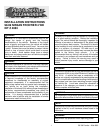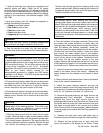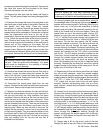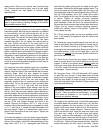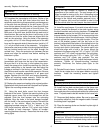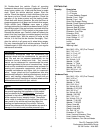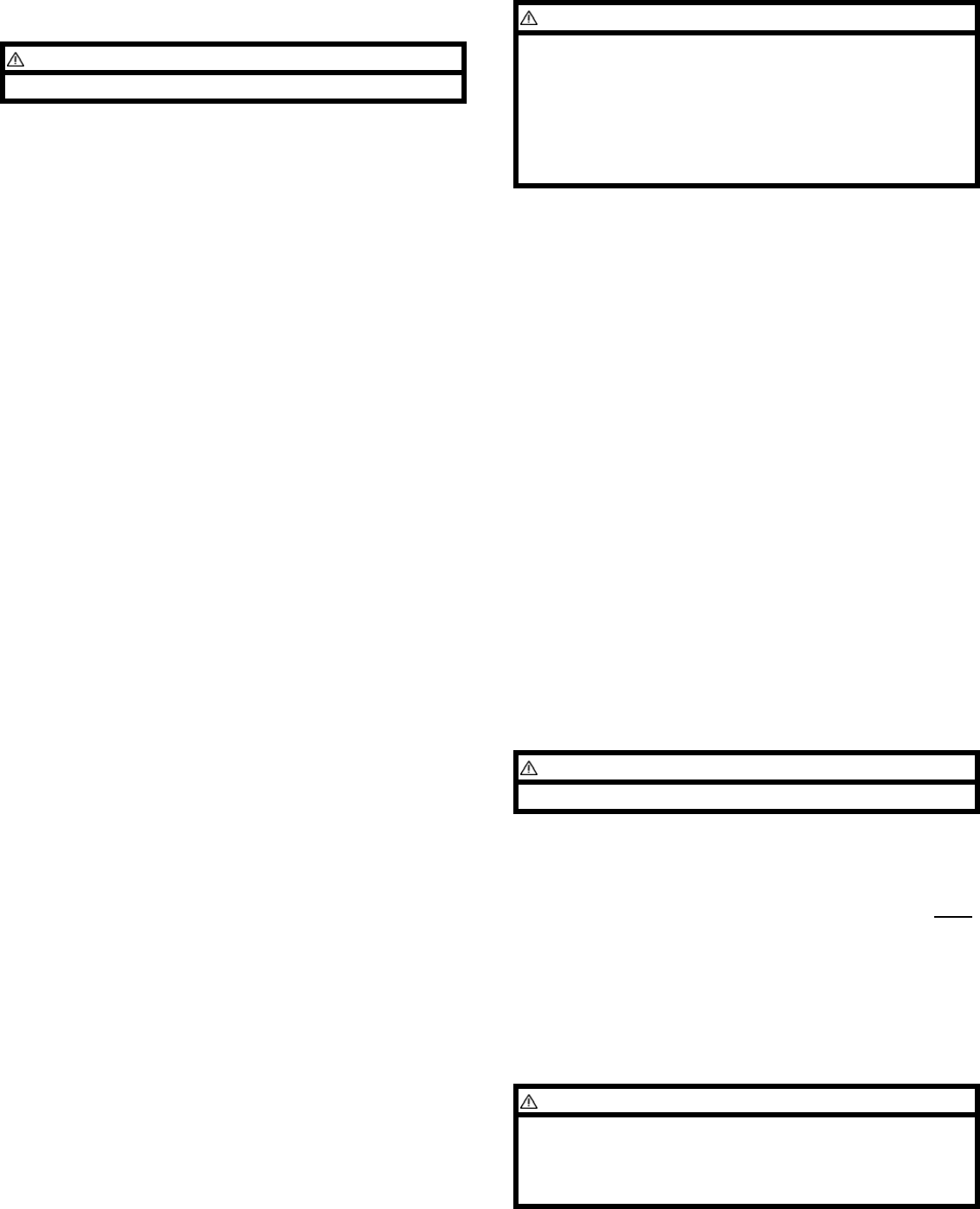
5 ’98-’99 Frontier – Kit# 4083
securely. Replace the fuel cap.
WARNING
A certified welder should perform all welding.
30. Lengthen the transmission shift lever. Scribe a line
along the side of the shift lever below the bend. Be
extremely careful during this procedure to not damage any
of the parts that are attached to the shift levers. Cut the
lever into two pieces through the line. Insert the shift lever
extension between the two parts of the shift lever. The
tapered end of the extension goes toward the bottom.
Both parts of the shift lever should slide into each end of
the extension. Be sure that the lever is all the way in the
extension and that the scribe lines are aligned with the
mark on the extension. Using the holes in the extension
as a guide, drill a 1/8” hole through each part of the shift
lever and the opposite side of the extension. Install a 1/8”
x ¾” roll pin at both ends of the extension. To lengthen
the transfer case lever, scribe a line along the shaft above
the two bottom bends and cut the shaft through the
scribed lines. Place the extension pin between the two
pieces and align the scribed lines before welding the
extension in place.
31. Replace the shift lever in the vehicle. Insert the
transmission shift lever into the top of the transmission.
Be sure that it is all the way in and replace the cover.
Install the spacer shim. Install the retaining clip. Bolt the
transfer case shifter to the transfer case and adjust the
linkage as outlined in the factory repair manual. Check
the shift lever and transfer case shifter operation. Be sure
that there is complete engagement in all gears and
ranges. Replace the shift boot and housing assembly.
Tighten all mounting screws securely. Check the shift
lever and transfer case shifter operation again.
32. Replace the carpet and matting to its original position.
Replace both kick panels and both doorjamb scuff plates.
Tighten the mounting screws securely.
33. Using the stock bolts, mount the front bumper
brackets to the frame. Tighten the mounting bolts so the
brackets cannot move, but so the bumper can still be
adjusted. Slide the front bumper onto the relocating
brackets. Align the holes in the stock bumper brackets
with the holes in the new bumper brackets. Reinstall the
bumper on the vehicle. Mount the bumper to the
relocating brackets using two 7/16” x 1" bolts, four 7/16”
USS (large) washers, and two 7/16" nylock nuts. Adjust
the bumper to body clearance. Tighten all bumper-
mounting hardware securely. Reconnect the wires to the
driving lights.
WARNING
Raising the rear bumper is intended to enhance the
appearance of the vehicle only. The rear bumper will no
longer be rated for towing of any kind. Attempting to tow
with the rear bumper after it has been raised can result in
damage to the vehicle and possible personal injury. A
class III receiver hitch must be installed in order to tow
with the vehicle after the rear bumper has been raised.
34. Install the rear bumper. If you wish to tow with the rear
bumper, reinstall the bumper in the stock location using
the stock brackets and mounting hardware. To raise the
rear bumper, remove the two bolts that mount each rear
bumper bracket to the bumper. Drill a new mounting hole
in the bumper side of the stock bumper. Hold the bumper
bracket against the frame in the stock location. Pivot the
rear of the bracket upward until the last hole on the
bracket is aligned with the bottom of the slotted hole in the
frame. The first hole in the bracket should still align with
the last stock hole in the bumper. The center mount hole
should also align with a hole in the frame. Mount the
brackets to the frame using the 7/16” x 1” bolts, 7/16’ USS
washers, and 7/16” nylock nuts provided. Do not tighten.
Mount the bumper using the 7/16” x 1” bolts, 7/16" USS
washers, and 7/16” nylock nuts provided. The rear
bumper should align with body. Adjust the bumper to body
clearance. Tighten all bumper-mounting hardware
securely. Reconnect the license plate lights to the
bumper.
35. Reinstall the air cleaner. Install the top of the housing.
Install the air intake duct to the upper radiator mounting
brackets. Install the mounting screws and tighten
securely.
WARNING
All welding should be performed by a certified welder only.
36. Install the four bed overload pads on the frame over
the wheel wells. Remove the rubber pads bolted to the
frame and place the overload pads where the rubber pads
were. The pads need to be tack welded to the frame only.
37. Reconnect both battery cables. Be sure to reconnect
the positive cable first, then the negative cable. Reinstall
the airbag fuse if equipped.
38. Place the warning sticker on the dash in plain sight of
all vehicle occupants.
CAUTION
All fasteners should be retorqued after 500 miles and after
off road use. All body lift components should be visually
inspected and fasteners retorqued during routine vehicle
servicing.



